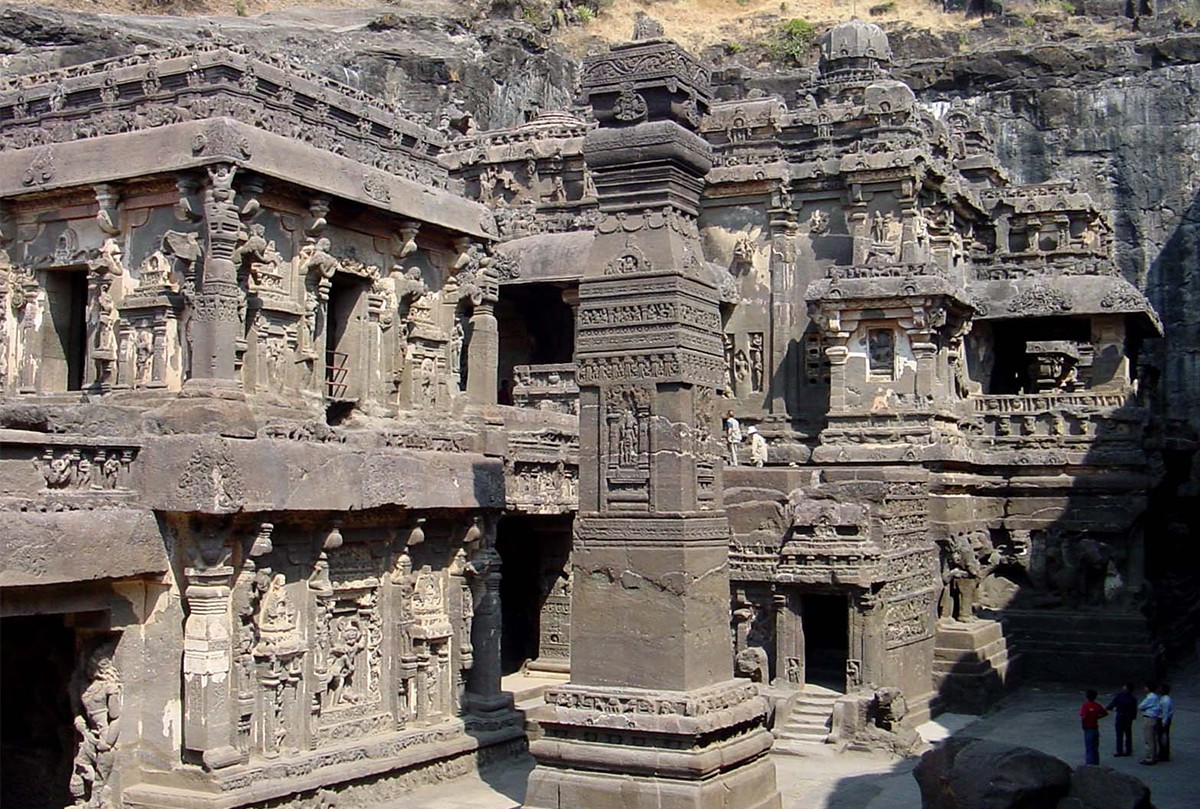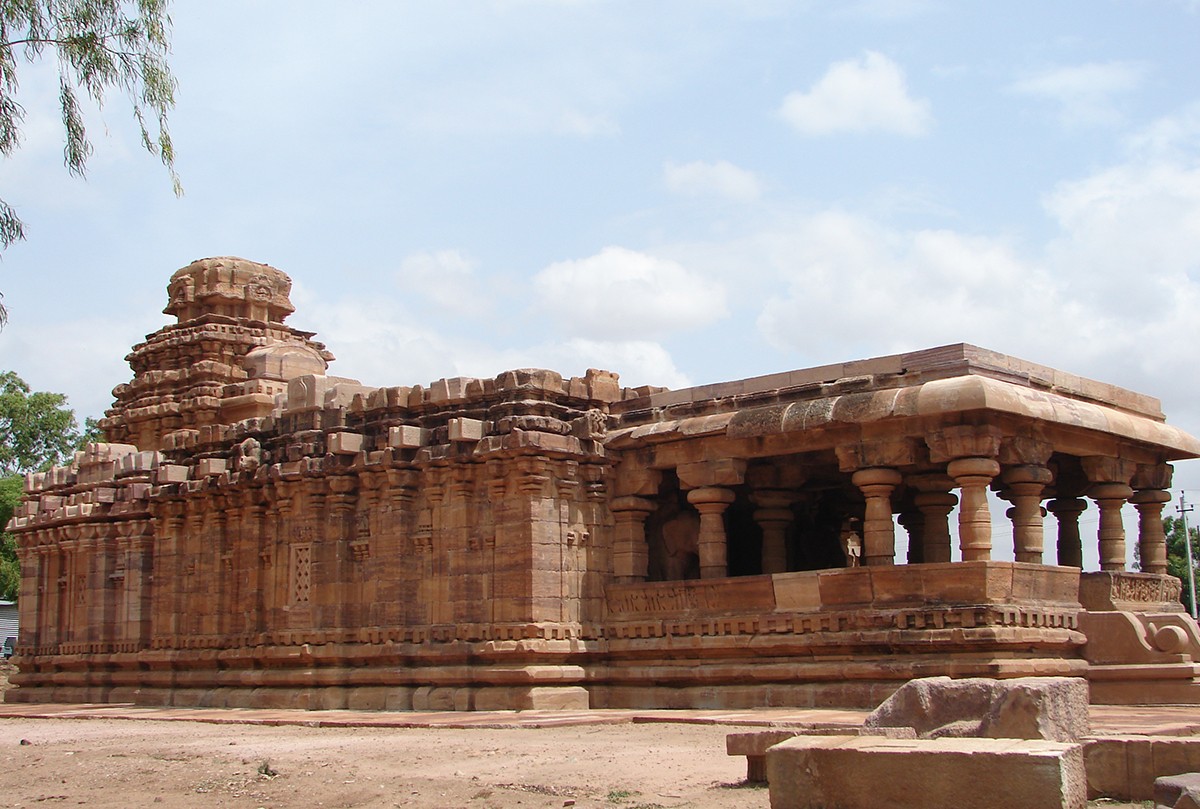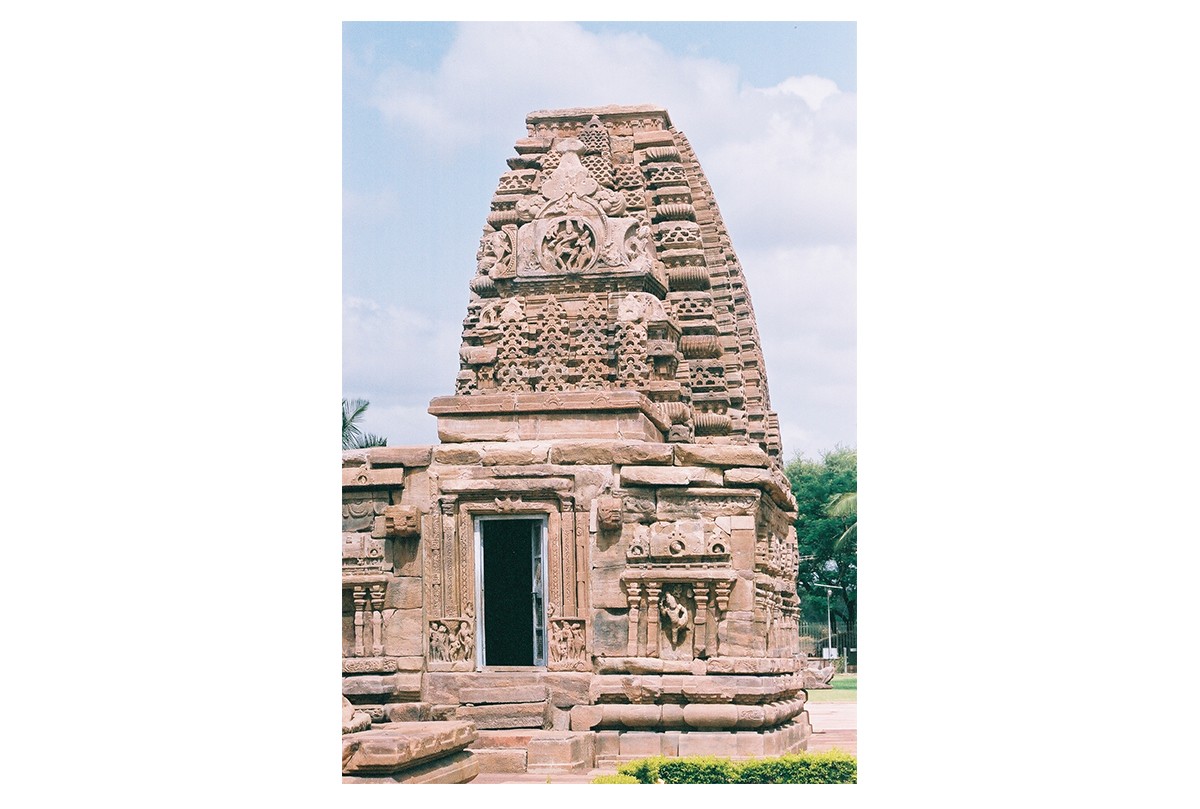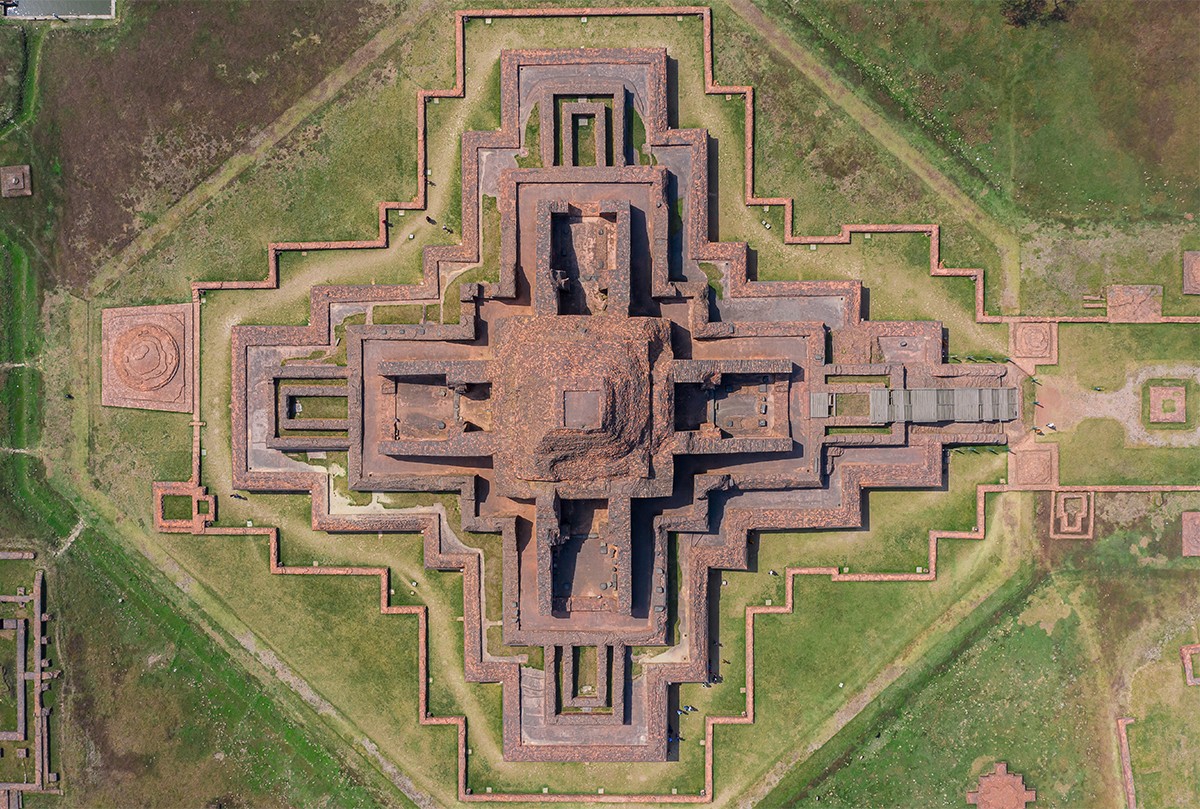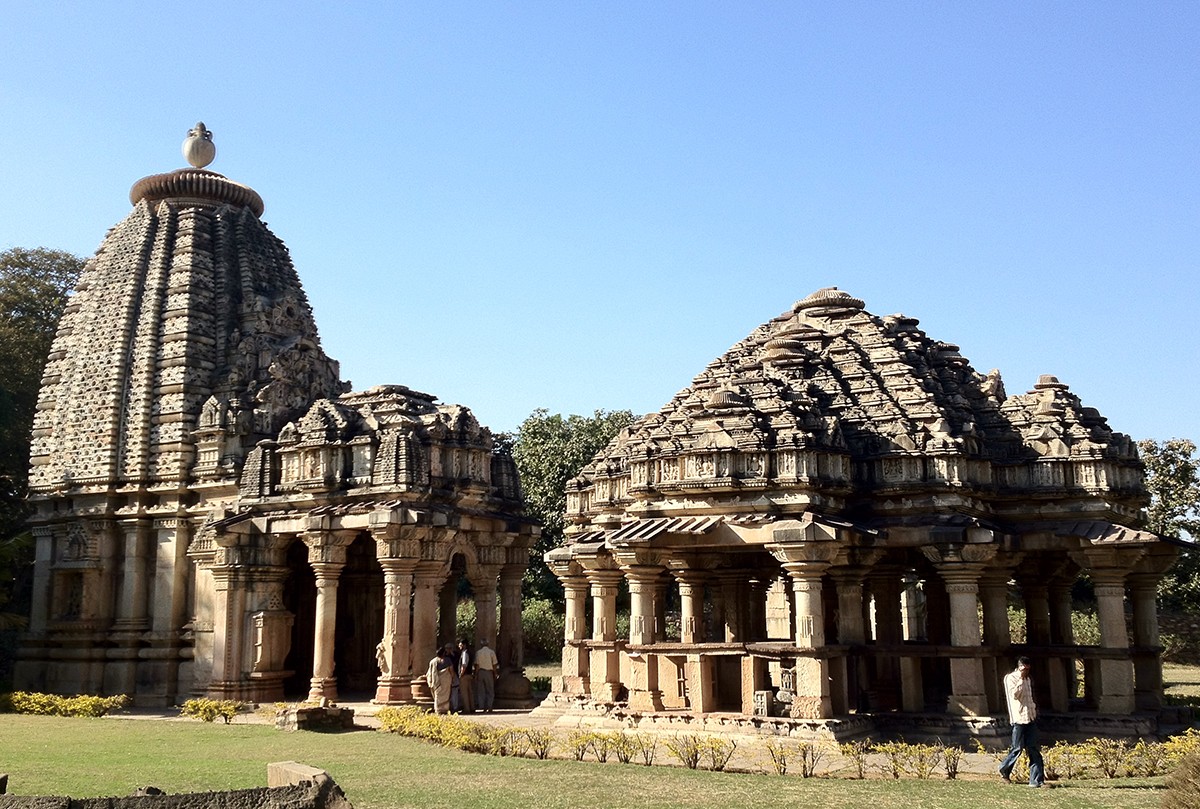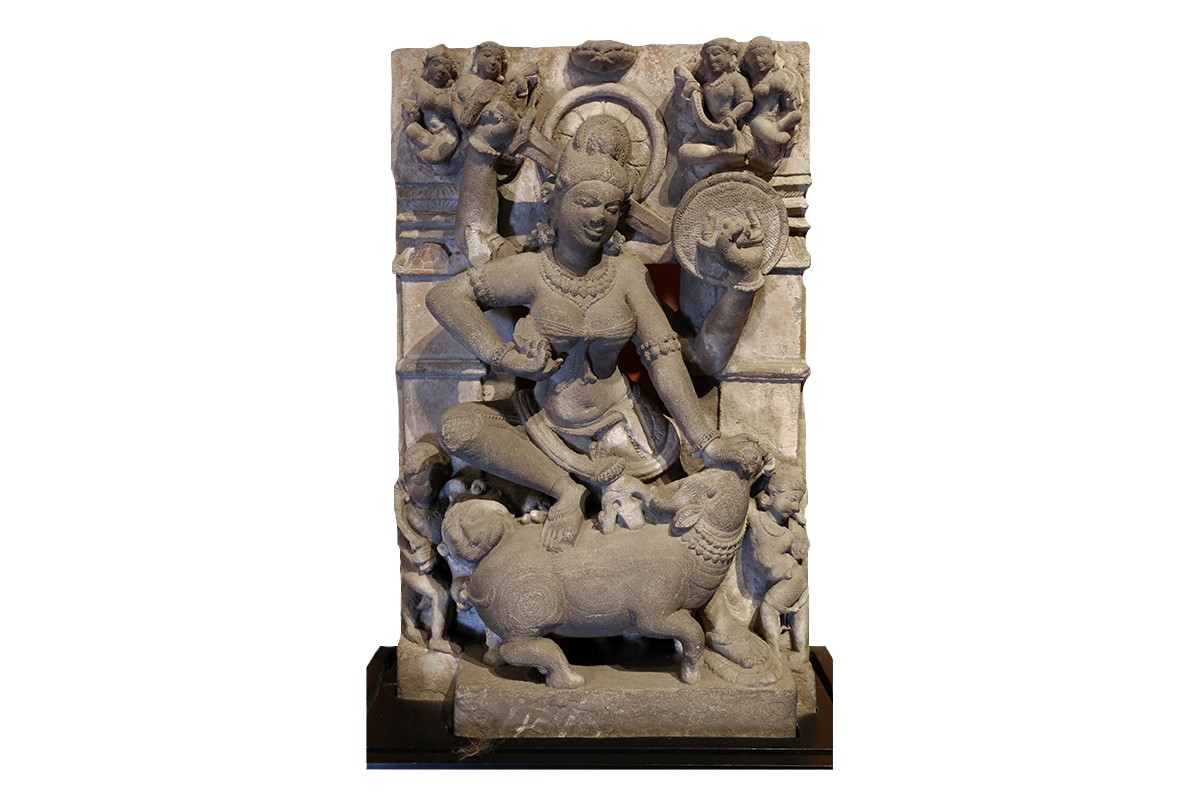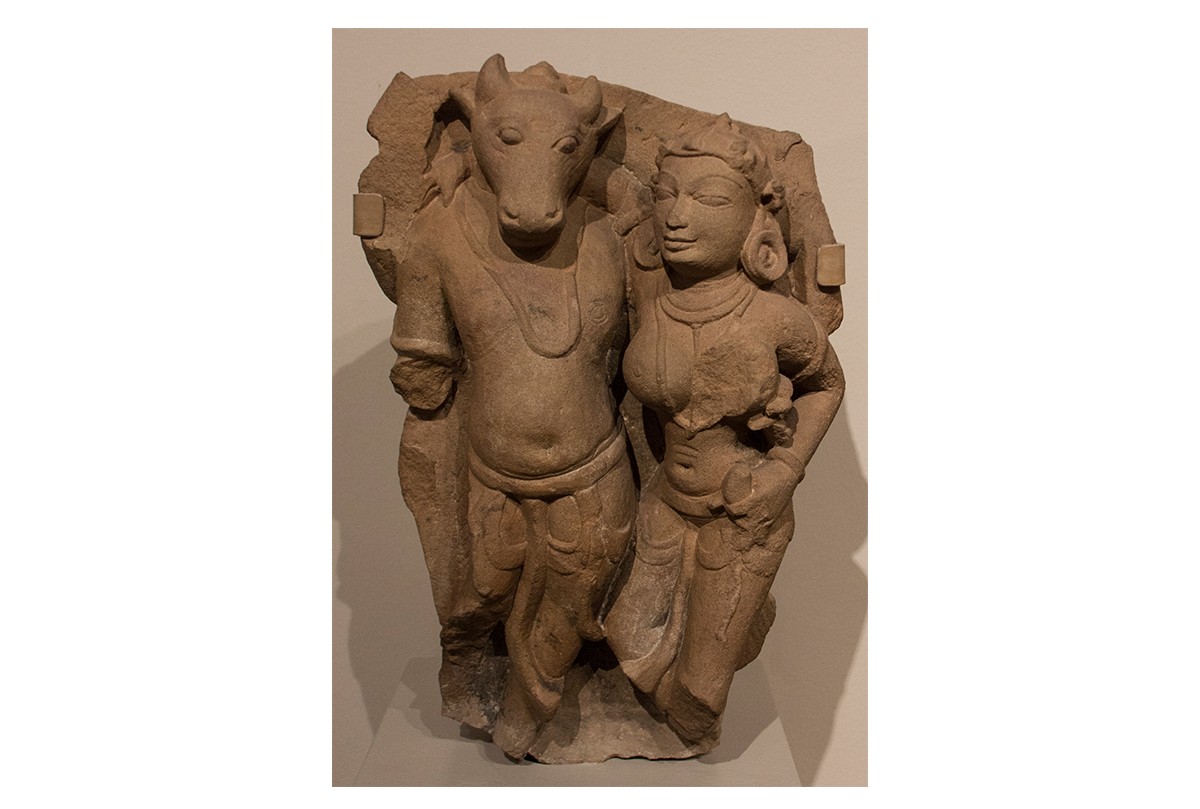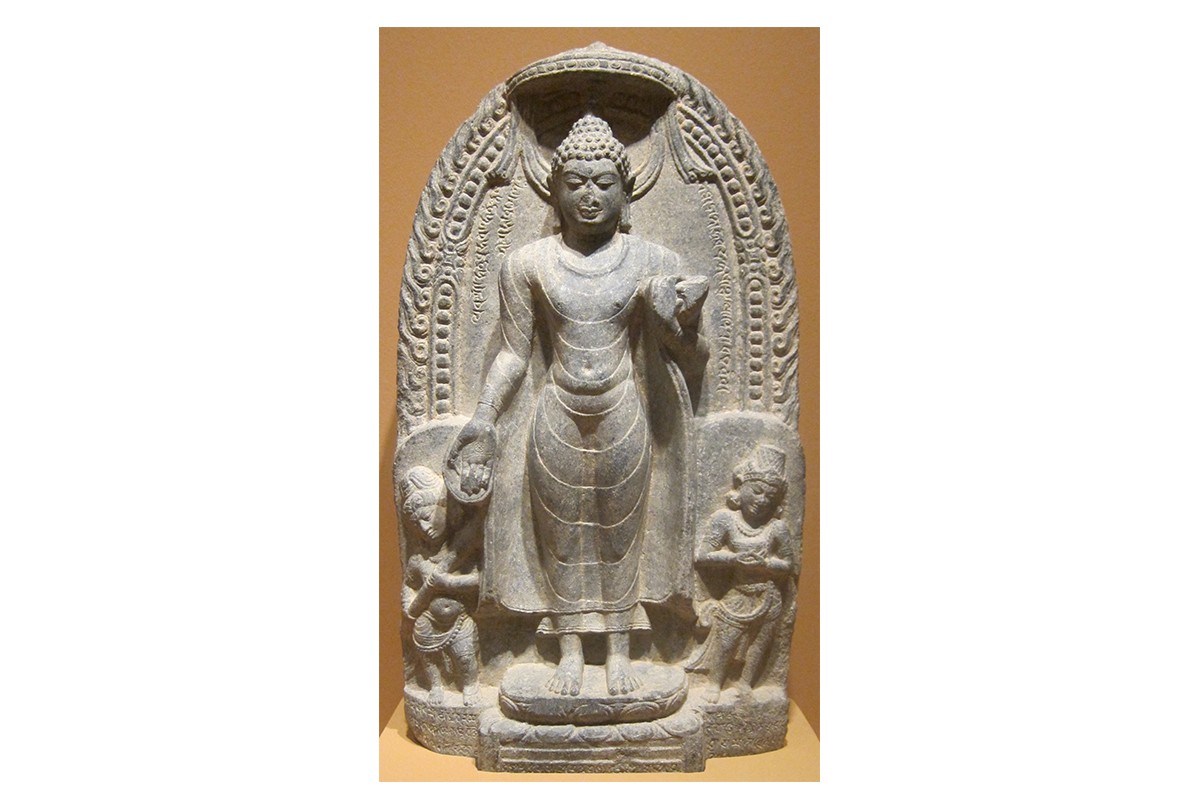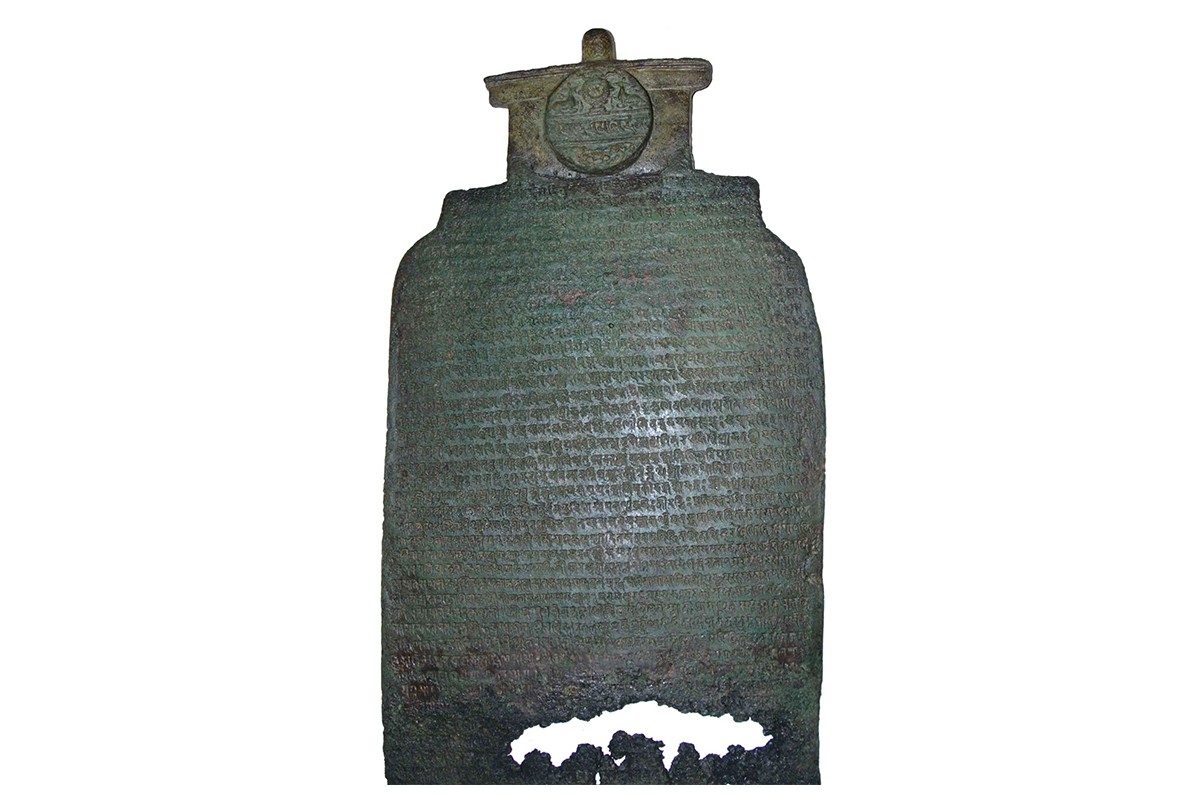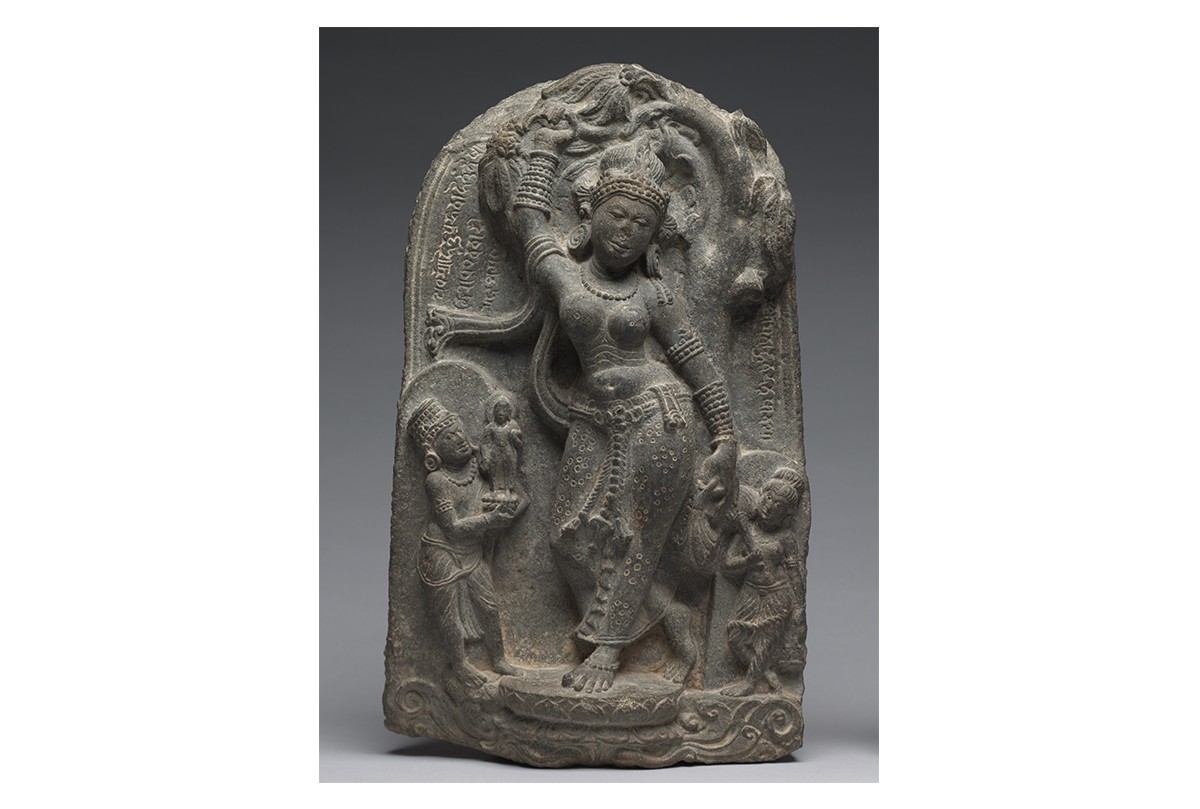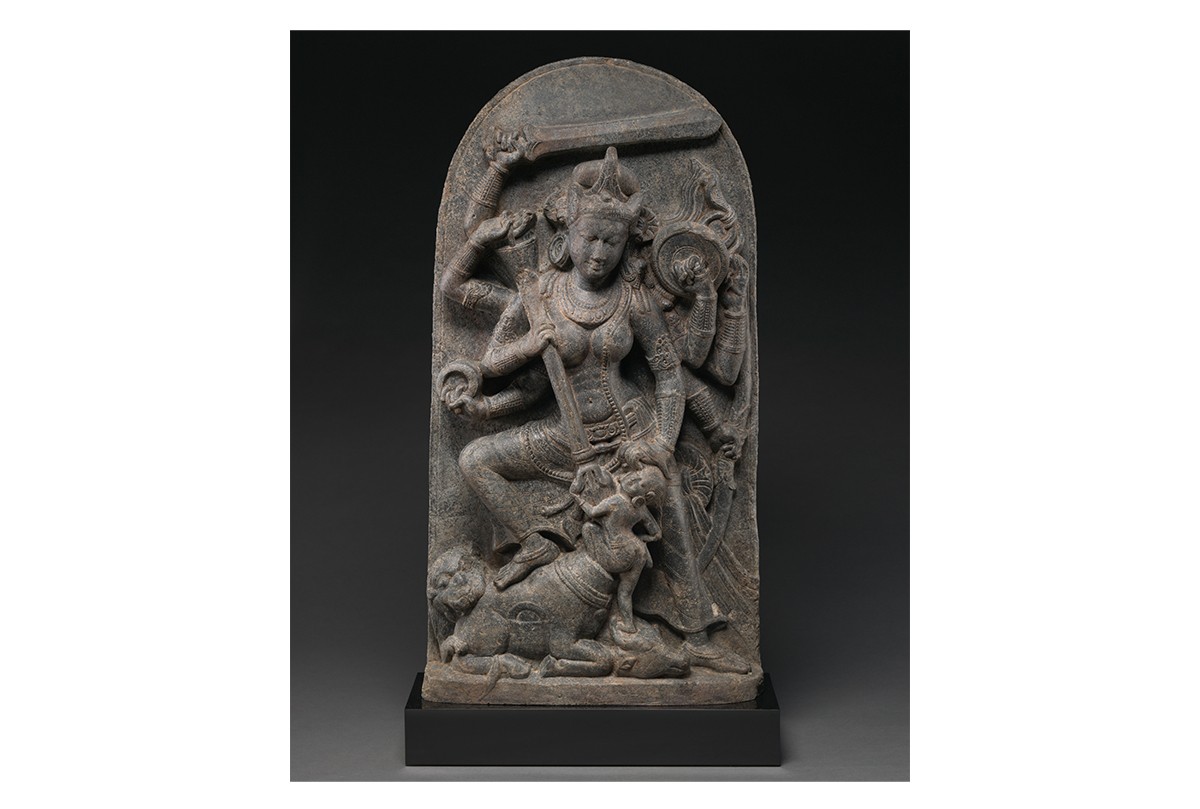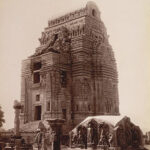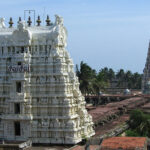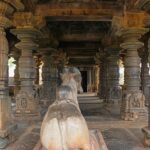Transregional Superstates Are Formed
800–900 CE
Strong, consolidated imperial formations, closely allied to permanent religious institutions, expand through major river systems and seek to project zones of influence well outside of their core areas.
Alongside the Palas and Gurjara-Pratiharas in northern India, the Rashtrakuta dynasty of the central Deccan, based in the upper Godavari River valley, reigns over much of present-day Maharashtra and Karnataka. Having overthrown the Early Western Chalukyas, they adopt their imperial culture, particularly the patronage of Shaivism, as expressed through imposing monuments such as the Kailasanatha Temple (Cave 16) at Ellora. The Rashtrakutas, Palas and Gurjara-Pratiharas develop a system of sovereignty in which they use the looming threat of war to generate tributes from neighbouring polities, which are granted the status of feudatories. These transregional powers coexist with smaller regional powers such as those of the Utkal Plains and the Coromandel Coast.
Bibliography
Singh, Upinder. A History of Ancient and Early Medieval India: From the Stone Age to the 12th Century. New Delhi: Pearson, 2016.
Sircar, Dineshchandra. Studies in the Geography of Ancient and Medieval India. New Delhi: Motilal Banarsidass, 1971.
Thapar, Romila. The Penguin History of Early India: From the Origins to AD 1300. London: Penguin Books, 2002.
Feedback 
This entry appears in
Art in South Asia
Visit Timeline
Associated Timeline Events
First Published: March 11, 2024
Last Updated: May 21, 2024



